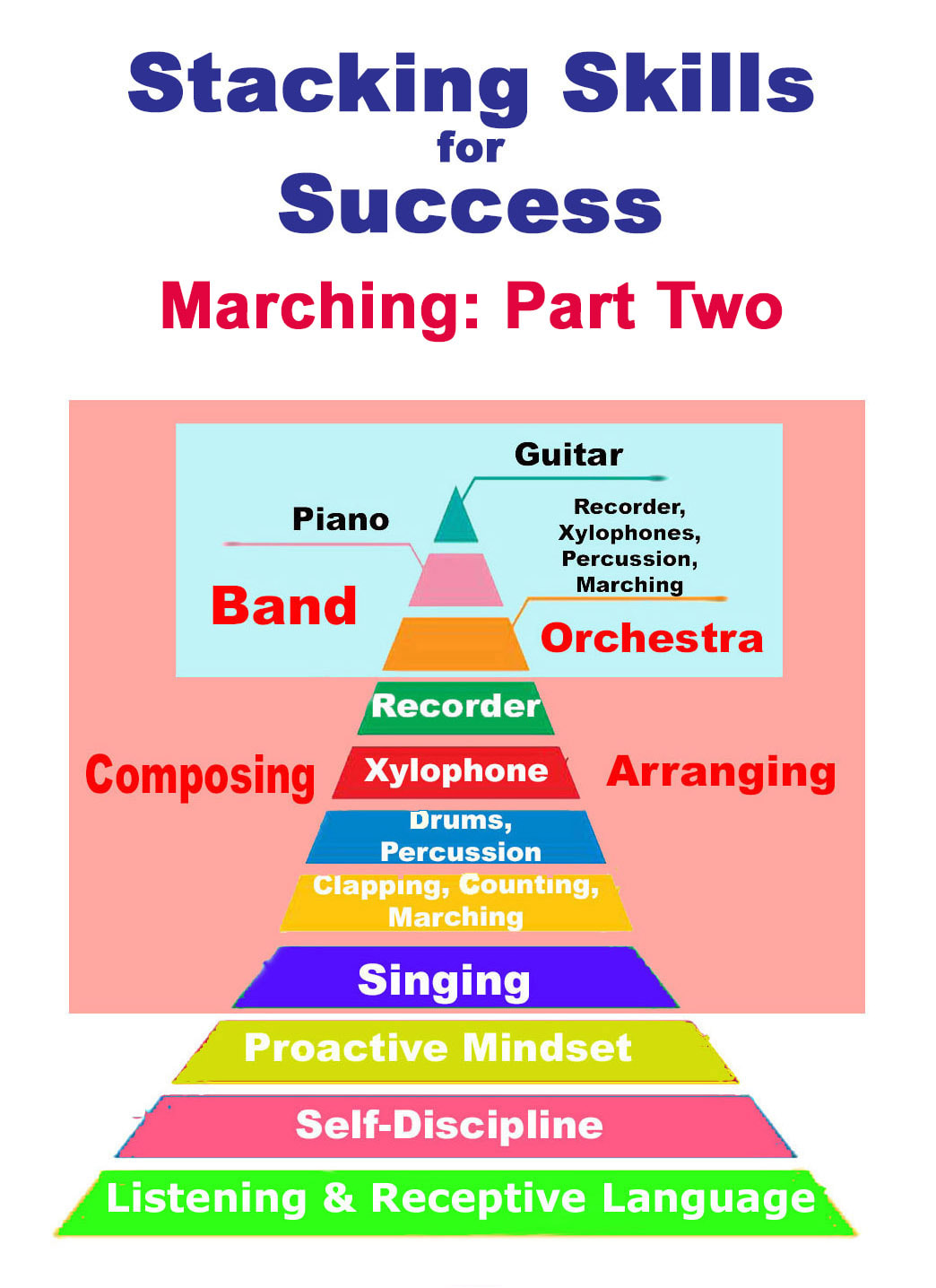Check out “Stacking Skills for Success: Marching – Part One” if you haven’t already.
Kids and parades: a kinetic mini-performance that is more fun for kids than any staged song performance.
As I've mentioned in other post, for 16 years I taught at one of the most incredible schools on earth, the John G Leach School in New Castle Delaware. it was a school primarily designed for children, ages 3 to 21, who had severe cognitive and or orthopedic disabilities.
The school's population was approximately 110 children and the majority of the children were able to ambulate through the use of a wheelchair.
Some of the best hallway parades I ever organized were at the Leach School.
Yes. Wheelchair parades.
Extraordinarily labor-intensive but well worth the effort.
With a few extra paraprofessionals, we were able to roll down the hall playing our marching band music loud and clear for all to hear.
We had flags!
We had hats!
We had instruments!
We had lots of fun!
Along with an assortment of hand percussion instruments, we utilized “Big Macs”, which were audio switch-activated sampling devices where I could pre-record snippets of me playing trumpet, clarinet, trombone, or tuba, all the little marching band riffs that I recorded were in the key of B flat concert.
When the Big Macs were triggered by the kids either with their hands or head switches, the samples all harmonically meshed together.
Our wheelchair parades were an example of how we didn't let anything get in our way to having fun in music.
We used the skills we had and learned a few more on the parade route.
The success of our parades only encouraged me too take mobility and the arts a little bit farther.
I wrote the score for a ballet, and had an upper and middle school classes choreograph it. They told the paraprofessionals exactly how they wanted theirs chairs to move on the stage. They all tried to synchronize their arm and head movements.
As usual with kids, it was the little things in performance that made it extra special for them.
Our ballet was complete with costumes, make-up, special effects, colored lights that changed with the music and the movement.
Again, it would have been impossible without the efforts of our tireless paraprofessional staff.
Our dancers thoroughly enjoyed the aspect of silently moving in rhythm to music on the stage with music and theatrical lighting.
You don't have to be in a school for kids with special needs to be confronted with a “how-am-I-going-to-do-this?” moment, either with an individual kid or project or a cool idea that just comes to you.
When in doubt, especially if you are working with kids with special needs, collaborate, just as I did, with the physical therapists and the occupational therapists.
They helped me with mobility issues as well as gripping issues with sticks, maracas, and other percussion instruments.
Without the synergy of our collaboration, we wouldn't have been able to pull it off or parades or ballet.
The important part for me was that I was able to visualize these activities from their inception, even though the picture was a little fuzzy and wasn't in total focus.
With the help of others, I was able to include kids in parades and ballets for the first time in our school.
Remember, it’s not about perfection.
It’s about participation!

 RSS Feed
RSS Feed